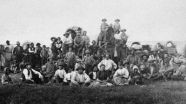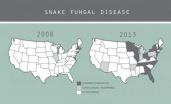(Press-News.org) Thousands of studies take place every year in healthcare settings. A report published recently in the American Journal of Preventative Medicine describes how to do many of these studies more rapidly. By taking into account the real-world constraints of the systems in which providers deliver care and patients receive it, researchers can help speed results, cut costs, and increase chances that recommendations from their findings will be implemented.
The lessons come from the My Own Health Report project, a collaboration between seven research institutions with the goal of streamlining how healthcare providers communicate with patients about preventative health topics including smoking, excessive drinking, and poor diet. In this case, the challenge is not awareness of the best behaviors or doctors' ability to speak to patients about these behaviors; the challenge comes primarily from the boots-on-the-ground reality that the time providers have with patients is severely limited and they need actionable assessment information at the point of care.
"A challenge with a lot of research we do is that it tends to be so siloed, studying one behavior or problem at a time, or so standardized and structured that it's often done in a way that isn't aligned with business as usual. If research doesn't align with real-world care settings, it never ends up being adopted or put into practice," says Russell Glasgow, PhD, investigator at the University of Colorado Cancer Center and associate director of the CU School of Medicine Colorado Health Outcomes Program.
Using 18 care-delivery centers that included primary care clinics and federally qualified health centers, the goal of the current study was to design and determine the effectiveness of a web-based self-report system to assess issues important to disease prevention, including traditional health risks like smoking, exercise and diet, mental health risks like depression and anxiety, and substance abuse.
"We wanted to engage patients to report these health behaviors and provide feedback on how they could work with their primary care providers to set goals. Ultimately we were trying to make personalized recommendations for healthy behavior change," says Glasgow.
According to Glasgow, there were four key takeaways that allow faster, cheaper, more responsive research tailored to the needs of patients and providers:
1. Engage relevant stakeholders early: study authors point out that taking into account the needs of stakeholders early in the process of experimental design made for less redesign needed to later translate study results into usable practices. For example, Glasgow says that pilot work for this project was aimed at making feedback "actionable but not overwhelming."
2. Pragmatism rather than perfection: for example, according to Glasgow this study chose to broadly define the criteria necessary for study participation – "we made very few exclusions at the patient level," Glasgow says. Using a broad, general sample of adults allowed the study to accrue participants quickly.
3. Use existing research networks: rather than building new partnerships or research settings in order to perfectly control the environments in which research took place, the study chose to use existing research networks and chose carefully which study elements would be standardized across these clinics and which would be allowed to vary.
4. Delegate research tasks: Glasgow describes dividing researchers into working groups, each with single tasks including finalizing the intervention, developing the web-based tool, finalizing outcome measures, and assessing differences in contexts between research settings. "And we gave each group decision-making authority," Glasgow says.
"This allowed everybody to get the same assessment – answer the same questions and provide the same feedback. But timing and the way the research fit into the primary care workflow was adapted to different clinics. What they got was standardized, but how they received it was localized," Glasgow says. For example, some patients completed the assessment at home before visiting the office, others answered questions in the waiting room, and others (in a low-literacy clinic) had staff members read the questions aloud.
These streamlined mechanics allowed the project to move from the receipt of funding applications to the completion of data collection in less than 18 months, an extremely short time for a national, multi-site trial. The authors write that, "Conducting complex studies rapidly and efficiently is a realistic goal." That is, if the needs of the delivery system are taken into account during the planning, implementation, and evaluation of research.
INFORMATION:
4 lessons for effective, efficient research in health care settings
Taking into account real-world constraints speeds research while cutting costs
2014-07-15
ELSE PRESS RELEASES FROM THIS DATE:
Mormon pioneer mortality rate calculated at 3.5 percent
2014-07-15
The final stanza of the Mormon pioneer anthem "Come, Come Ye Saints" directly confronts the prospect of dying on the trail: "And should we die, before our journey's through…"
Now new research shows that pioneer mortality rates were not much greater than national averages at the time.
This may come as a surprise to modern Mormon youth who've participated in handcart treks.
"The youth go out and learn that a lot of people died and they push the handcart and after three days they think they are practically dead," said retired historian Mel Bashore. "But most people traveled ...
Saltier intravenous fluids reduce complications from surgery
2014-07-15
(PHILADELPHIA) -- Adequate hydration via a saline drip is essential during surgery, but recent reports suggest that getting the balance of salt and water just right could have an important impact on patient recovery. In the largest study of its kind researchers at Thomas Jefferson University found that a slightly saltier intravenous drip (hypertonic saline), and lower total volume of fluid received, reduced the overall rate of complications by 25 percent after the complex Whipple surgery for pancreatic cancer.
"This relatively minor change in intravenous fluids has ...
Defects in fatty acid transport proteins linked to schizophrenia and autism
2014-07-15
Using diverse methodologies, neuroscientists from the RIKEN Brain Science Institute report that defects in Fatty Acid Binding Proteins (FABPs) may help to explain the pathology in some cases of schizophrenia and autism spectrum disorders. After identifying mutations in FABPs from patients, the group led by Senior Team Leader Takeo Yoshikawa determined that the genetic disruption of Fabps in mice mimics disease behaviors seen in patients. This work suggests that disruption of FABPs could be a common link underlying some forms of these two prevalent mental disorders.
Published ...
Smarter ads for smartphones: When they do and don't work
2014-07-15
NEW YORK — Brands spent $8.4 billion on mobile advertising in 2013, and that number is expected to quadruple to $36 billion by 2017, according to eMarketer. But do mobile display ads — those tiny banner ads that pop up in your smartphone's web browser — actually work? Researchers at Columbia Business School have found that, despite their size, mobile ads can have a big effect on consumers who are in the market for certain types of products.
"Digital advertising in mobile channels is experiencing explosive growth," said Miklos Sarvary, co-director of the Media Program ...
NASA sees Typhoon Rammasun's eye staring at Visayas, Philippines
2014-07-15
Early on July 15, Typhoon Rammasun began making landfall in the eastern part of the central Philippines and NASA's Aqua and TRMM satellites spotted the 20 nautical-mile-wide (23 mile/37 km) eye of the storm close to landfall.
Typhoon Rammasun was making landfall in the Visayas region. Visayas is located in the central Philippines.
The Tropical Rainfall Measuring Mission or TRMM satellite passed over Rammasun on Tuesday, July 15, 2014 at 04:10 UTC (12:10 a.m. EDT) and measured rainfall occurring throughout the storm. TRMM found moderate rainfall (about 35 mm)/1.4 inches ...
Scientists gear up to fight deadly snake fungal disease
2014-07-15
CHAMPAIGN, Ill. — Researchers have developed a faster and more accurate way to test for infection with Ophidiomyces ophiodiicola, a fungus that is killing snakes in the Midwest and eastern United States. The test also allows scientists to monitor the progression of the infection in living snakes.
The researchers reported on the test at the 2014 Mycological Society of America Annual Meeting.
"We need people to know that they don't have to anesthetize an animal to collect a biopsy sample or, worse yet, euthanize snakes in order to test for the infection," said University ...
This week from AGU: Dust models, Arctic Ocean waves, floods and climate change
2014-07-15
From AGU's blogs: Global climate models fail to simulate key dust characteristics
Climate models that simulate the airborne African dust that influences Atlantic Ocean hurricanes are not up to the task of accurately representing the characteristics of that dust, according to a new study accepted for publication in Geophysical Research Letters.
From AGU's journals: Surface waves contribute to ice retreat in Beaufort Sea
Surface waves, created by blowing wind, play a role in energy and nutrient transport and also shape coasts through erosion. Because the Arctic Ocean ...
New UK study helps scientists understand melanoma development
2014-07-15
LEXINGTON, Ky. (July 15, 2014) — A new study by University of Kentucky researchers shows how a genetic defect in a specific hormonal pathway may make people more susceptible to developing melanoma, the deadliest type of skin cancer.
Fair-skinned people who tend to burn (rather than tan) from sun exposure have a much higher risk for melanoma than darker-skinned people. On the surface, it appears that the amount of melanin, the natural substance in the skin that determines pigment and acts as the skin's "natural sunscreen," would be the only determinant of melanoma risk. ...
Directly visualizing hydrogen bonds
2014-07-15
WASHINGTON D.C., July 15, 2014 – Using a newly developed, ultrafast femtosecond infrared light source, chemists at the University of Chicago have been able to directly visualize the coordinated vibrations between hydrogen-bonded molecules -- the first time this sort of chemical interaction, which is found in nature everywhere at the molecular level, has been directly visualized. They describe their experimental techniques and observations in The Journal of Chemical Physics, from AIP Publishing.
"These two-dimensional infrared spectroscopy techniques provide a new avenue ...
New feathered predatory fossil sheds light on dinosaur flight
2014-07-15
LOS ANGELES—A new raptorial dinosaur fossil with exceptionally long feathers has provided exciting insights into dinosaur flight. A paper published in Nature Communications on July 15, 2014 asserts that the fossil—discovered by an international team led by Natural History Museum of Los Angeles County (NHM) paleontologist Dr. Luis Chiappe—has a long feathered tail that Chiappe and co-authors believe was instrumental for decreasing descent speed and assuring safe landings.
The 125-million-year-old dinosaur, named Changyuraptor yangi, was found in the Liaoning Province ...
LAST 30 PRESS RELEASES:
The Journal of Nuclear Medicine Ahead-of-Print Tip Sheet: January 2, 2026
Delayed or absent first dose of measles, mumps, and rubella vaccination
Trends in US preterm birth rates by household income and race and ethnicity
Study identifies potential biomarker linked to progression and brain inflammation in multiple sclerosis
Many mothers in Norway do not show up for postnatal check-ups
Researchers want to find out why quick clay is so unstable
Superradiant spins show teamwork at the quantum scale
Cleveland Clinic Research links tumor bacteria to immunotherapy resistance in head and neck cancer
First Editorial of 2026: Resisting AI slop
Joint ground- and space-based observations reveal Saturn-mass rogue planet
Inheritable genetic variant offers protection against blood cancer risk and progression
Pigs settled Pacific islands alongside early human voyagers
A Coral reef’s daily pulse reshapes microbes in surrounding waters
EAST Tokamak experiments exceed plasma density limit, offering new approach to fusion ignition
Groundbreaking discovery reveals Africa’s oldest cremation pyre and complex ritual practices
First breathing ‘lung-on-chip’ developed using genetically identical cells
How people moved pigs across the Pacific
Interaction of climate change and human activity and its impact on plant diversity in Qinghai-Tibet plateau
From addressing uncertainty to national strategy: an interpretation of Professor Lim Siong Guan’s views
Clinical trials on AI language model use in digestive healthcare
Scientists improve robotic visual–inertial trajectory localization accuracy using cross-modal interaction and selection techniques
Correlation between cancer cachexia and immune-related adverse events in HCC
Human adipose tissue: a new source for functional organoids
Metro lines double as freight highways during off-peak hours, Beijing study shows
Biomedical functions and applications of nanomaterials in tumor diagnosis and treatment: perspectives from ophthalmic oncology
3D imaging unveils how passivation improves perovskite solar cell performance
Enriching framework Al sites in 8-membered rings of Cu-SSZ-39 zeolite to enhance low-temperature ammonia selective catalytic reduction performance
AI-powered RNA drug development: a new frontier in therapeutics
Decoupling the HOR enhancement on PtRu: Dynamically matching interfacial water to reaction coordinates
Sulfur isn’t poisonous when it synergistically acts with phosphine in olefins hydroformylation
[Press-News.org] 4 lessons for effective, efficient research in health care settingsTaking into account real-world constraints speeds research while cutting costs





